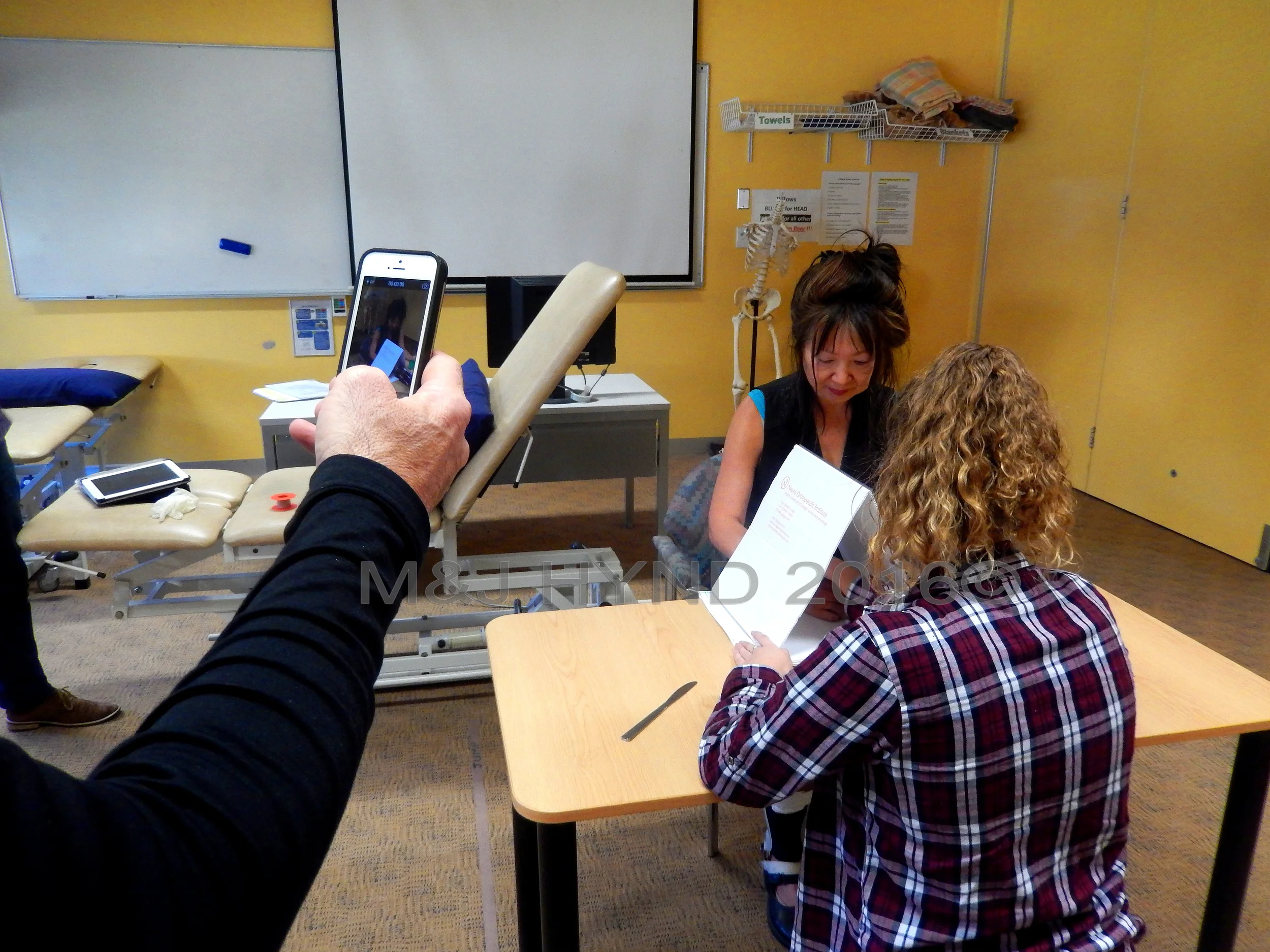Rehab: Training Day
The physiotherapist at AIH/AUT forwarded me as a possible candidate to participate in a group session of third-year students tutorials. Helping to train Stroke Physio students - really? I would be happy if someone thought I'd be a worthwhile candidate for Stroke Physio training for students. Some form of practical assessment and treatment for students, before they ventured out into the world sounded like a very good idea to me.
Ah, yes ok. Meanwhile, I continued to be under his training as he tried various method to enable me to have a better stance when walking. It took a while for the 3rd year student thing to come to fruition.... I'd forgotten about after a few weeks until one day I had an email from the organisers of the volunteering sessions:
' …..We are wondering if you might be interested in being a volunteer in one of our neurological student tutorials. I have attached some information, as well as a schedule of times that we would ask for volunteers. Please get back to me if you have any queries...''
Oh, how exciting... to be asked to give back to the community, what is to me, a second chance at life. To be without physiotherapists, osteopathy practitioners, was unthinkable when I had the emergency brain haemorrhage that needed a team of neurosurgeons to save my life and subsequent stroke. It would have been dire!
The opportunity to work with students, in their prime; waiting for the opportunity to deliver the best options possible care in helping patients get better was more than great.
In a relatively small population of NZ, it is quite unique to have someone who had had a brain haemorrhage due to a congenital Arterio Venous Malformation (it is very rare and occurs in less than 1% of the general population) and the resulting stroke (couldn't walk, talk, read, write, had severe aphasia, short-term memory was obliterated); and who've lived to tell the tale, 20 years later: ''moi''...
Murray and I attended the sessions later on - I still have memory lapses, and I speak in short bursts, as when I remember things. I have to pin them down, otherwise I tend to forget.
Murray is a solid backup for more information as he has intimate knowledge of what I went through, blow by blow, and he has a better account of the first 10 years after the stroke.
The Physiotherapy Lecturer & Programme Leader at the physiotherapy 3rd-year-students session, put me at ease, and after a short introduction to all the students that was present that day, we started. I was perhaps the perfect candidate as I showed symptoms that the students had only read about in textbooks; i.e. the ''clonus'' effect, and I could show it more or less at will with my right calf muscle:
Clonus: involuntary, muscular contraction and relaxation in rapid succession, a continuous rhythmic reflex tremor, marked by contractions and relaxations of a muscle, occurring in rapid succession seen with, among other conditions, spasticity and some seizure disorder.
I also exhibited very prominent shoulder sub-luxution. A shoulder sub-luxation or instability involves a temporary, partial dislocation of the shoulder joint. It could be painful or just very tight, and needed to be adjusted.
As I told my story, the students asked many questions and tested my capability, recording as much information as they could as this was the "consultative" process - try to figure out what the issues are. We came back the following week as the second session was the "therapy" process, interpreting the information the previous week into techniques and modalities that they figured out might be the best {restorative benefit}. Sub-groups of them practiced on me in turn, and provided me with exercises that I might not have known about.
All in all it was an enjoyable and beneficial time for both the students and us.
Many thanks to the students at AUT/AIH and the Physiotherapy Lecturer and Programme Leader, Todd Stretton.



